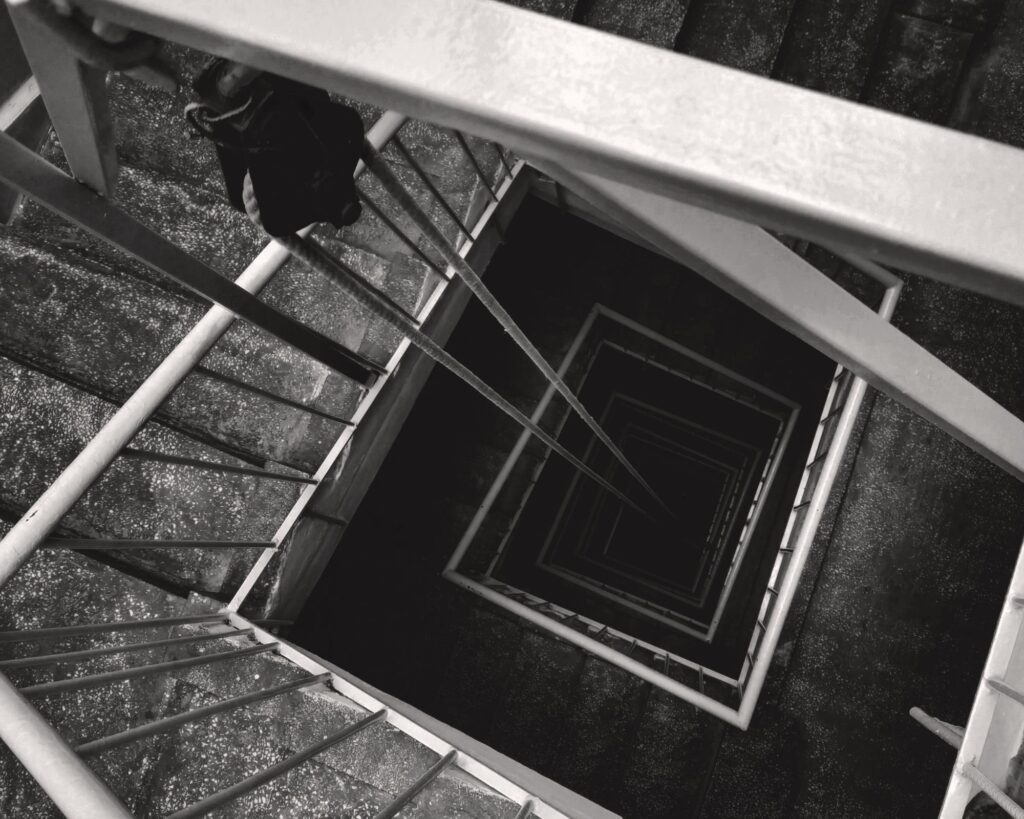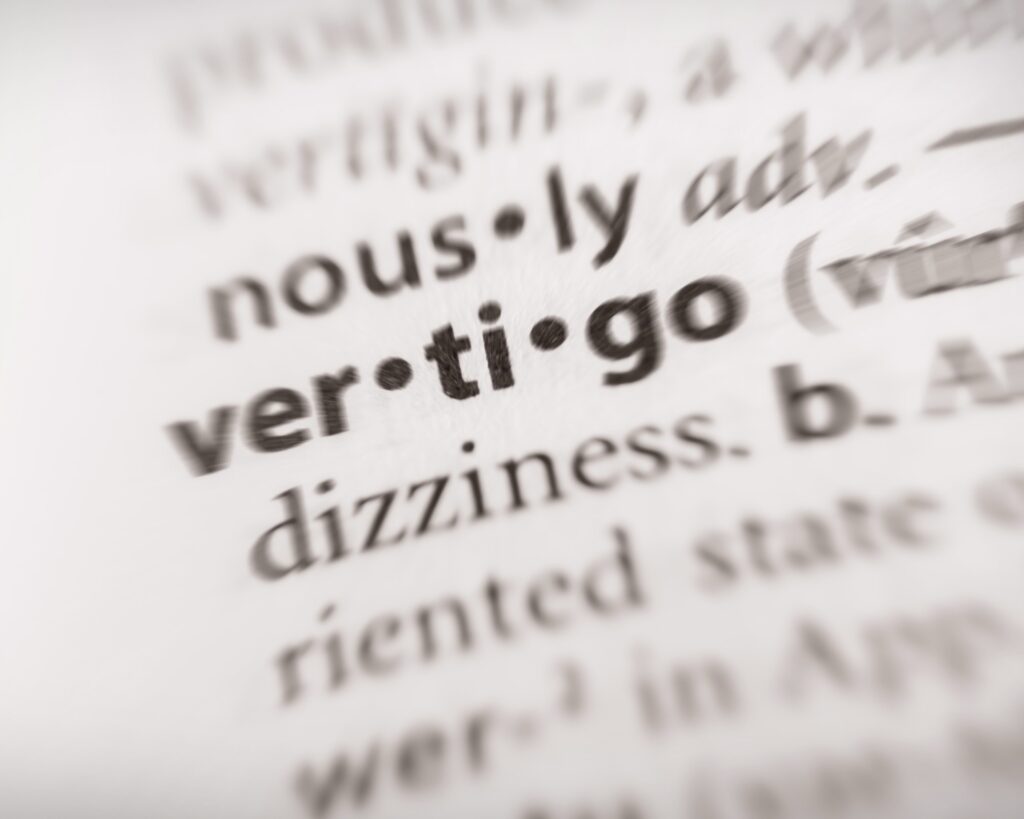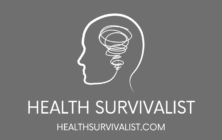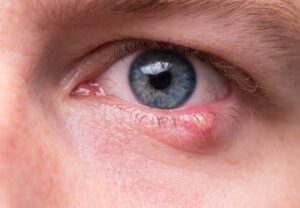
David’s Dizzying Dilemma
Ever find yourself in a situation that seems straight out of a comedy sketch, only to realize it’s your reality? That’s me, David, every time I try to fix something around the house. You see, I can lie flat on my back star-gazing or flip from side to side in bed without a hint of trouble. But the moment I’m under the sink wrenching a pipe or on my back on a creeper sliding under the car, my world starts to spin like a merry-go-round at warp speed.
It’s not the kind of spin you feel after a wild night out; it’s the kind that makes you grab onto the grass, hoping you won’t fall off the Earth. Oddly enough, spending an entire day on my knees gardening or pulling weeds doesn’t trigger this whirlpool in my brain. It specifically kicks in when I’m looking up or reclining in certain positions.
For the longest time, I brushed it off as a quirky thing my body did — a weird party trick I could pull at gatherings. “Watch how David can’t look up without turning into a human gyroscope,” I’d joke. But deep down, I knew something wasn’t quite right. It was time to unravel this mystery. Why does looking upwards or lying in certain ways send me into a vertigo vortex? And more importantly, what can I do about it?
Join me on this dizzying journey as I navigate the twists and turns of living with vertigo, seeking answers, and maybe, just maybe, finding a way to keep my world from spinning out of control.

Understanding Vertigo: The Basics
If you’ve ever been on a boat in choppy waters or spun around too quickly as a kid, you’ve experienced that unsettling sensation of dizziness. But vertigo? That’s a whole different ballgame. Vertigo makes you feel like you’re spinning or the world around you is spinning, even when everything is perfectly still. It’s like being stuck on a roller coaster without the thrill of the ride.
For me, the adventure begins with seemingly mundane tasks—fixing a leaky faucet or changing the oil in my car—anything that requires me to tilt my head back or lie down in a certain way. At first, I thought I was just overdoing it or maybe not getting enough water. But as it turns out, vertigo is a bit more complex.
Vertigo is often linked to issues with the inner ear, the headquarters of our balance system. When this system gets out of whack, it sends confusing signals to the brain about our body’s position in space, leading to that dizzying sensation. It’s a delicate balance, pun intended, and when disturbed, it can turn your world upside down—literally.
Many people experience vertigo during specific position changes—like looking up—which is a hallmark of benign paroxysmal positional vertigo (BPPV). BPPV can make ordinary activities feel like a challenge, turning simple tasks into dizzying endeavors.
But why does this happen? Why does looking upward or lying flat trigger such a disorienting response? The answer lies in the tiny calcium crystals in our inner ear. Sometimes, these crystals can migrate into areas where they don’t belong, causing our internal gyroscope to go haywire at the slightest movement.
Understanding vertigo was the first step in my journey. Armed with this knowledge, I felt less like a mystery patient and more like someone who could tackle this head-on, pun fully intended. But understanding was only the beginning; I needed to dig deeper into the why and how, especially regarding my peculiar triggers.
In searching for answers, I stumbled upon “Navigating the Complexities of Dizziness: Understanding My Symptoms”, which shed light on the myriad ways vertigo can manifest and how seemingly unrelated activities could set off a dizzying episode. It was a revelation to realize that I wasn’t alone in my spinning world and that there were steps I could take to manage my vertigo.

Exploring Potential Triggers and Conditions
After realizing that my vertigo wasn’t just a quirky party trick but a real condition that needed attention, I embarked on a mission to understand the triggers and underlying causes. It was clear that certain positions and tasks, particularly those involving looking up or laying flat while working under constraints, were my primary antagonists. But why? What was it about these specific activities that sent my senses into a spiral?
The Culprit: Positional Changes
The first clue in unraveling this mystery was recognizing the pattern: my vertigo episodes were closely tied to positional changes. This wasn’t just about being upright or lying down; it was the specific act of tilting my head back or being on my back with my head turned. It pointed towards a classic case of benign paroxysmal positional vertigo (BPPV), where certain head movements trigger vertigo due to displaced crystals in the inner ear. Yet, BPPV didn’t fully explain the prolonged dizziness after standing up or the absence of symptoms during activities like gardening.
Beyond BPPV: Exploring Other Avenues
Determined to dig deeper, I considered other potential conditions that might mimic or exacerbate BPPV’s effects. This exploration led me to fascinating insights about the interconnectedness of our body systems. Conditions like Temporomandibular Joint Disorder (TMD), which affects jaw movement and alignment, can also impact balance and cause symptoms similar to vertigo. The link between TMD and vertigo was a revelation, as discussed in depth at “The Hidden Culprit: How TMD Affects More Than Just Your Jaw”.
Neck Issues and Vertigo
Another piece of the puzzle was the role of neck health in vertigo episodes. Issues like C5 to C6 nerve compression or general neck strain from unusual positions could contribute to dizziness and disorientation. The spine’s health, especially the neck region, is crucial for sending accurate signals to the brain about our body’s orientation in space. Understanding this connection, as explained in “Understanding Neck Pain and Dizziness”, provided another avenue for managing my symptoms.
Seeking Solutions: The Road to Relief
Armed with this newfound knowledge, it became clear that tackling vertigo wasn’t just about avoiding certain positions but addressing the underlying causes. Whether it was through targeted physiotherapy for my neck, exploring treatments for TMD, or employing specific exercises for BPPV, the path to relief involved a holistic approach to my health. Resources like “Neck Pain Relief: Physiotherapy or Chiropractic Care?” became invaluable guides as I navigated my options.
In this journey, understanding the “why” behind my vertigo wasn’t just an academic exercise; it was a crucial step towards regaining control over my life. By exploring the potential triggers and conditions beyond the surface symptoms, I began to piece together a strategy for managing my vertigo, moving from confusion and frustration to empowerment and action.

Seeking Solutions: From Diagnosis to Management
Realizing that vertigo wasn’t just a quirk but a condition with potential solutions was a game-changer for me. It turned my quest from merely coping with the spins to actively seeking ways to mitigate or even eliminate them. The journey from diagnosis to effective management involved a multifaceted approach, integrating professional advice, lifestyle adjustments, and supportive therapies.
Step One: Getting a Proper Diagnosis
The pivotal first step was obtaining an accurate diagnosis. This involved consultations with healthcare professionals, including a vertigo specialist who could perform specific tests to pinpoint the exact nature of my vertigo. The diagnostic process was eye-opening, revealing not just one, but several contributing factors to my dizzy spells.
Innovative Remedies and Support
Vertisil: A Natural Approach
In exploring treatment options, I was keen on finding both conventional and alternative remedies. That’s when I discovered Vertisil, a natural supplement designed to combat vertigo. Its promise of relief, grounded in scientific health principles, offered a glimmer of hope in my quest for balance.
Vertigo Ease Roll-On: Immediate Relief
For moments when I needed quick relief from sudden dizzy spells, the Basic Vigor Vertigo Ease Roll-On became my go-to solution. Its blend of lavender, ginger, and essential oils provided a natural and fast-acting remedy that I could apply anytime, anywhere.
Motion Sickness Bands: A Wearable Solution
Understanding that vertigo can sometimes feel like motion sickness, I gave Motion Sickness Bands a try. These bands, designed to stimulate the vagus nerve, offered a drug-free way to alleviate nausea and dizziness associated with vertigo, especially during flare-ups.
Lifestyle Adjustments and Physical Therapy
Armed with a diagnosis and supportive remedies, I also made lifestyle adjustments and pursued physical therapy. Techniques like vestibular rehabilitation exercises became a staple in my routine, aiming to retrain my brain and balance system to cope better with positional changes.
Neck Care: The Foundation of Balance
Considering the role of neck health in vertigo, I incorporated physiotherapy and chiropractic care into my management plan. These therapies, focused on relieving neck pain and improving spinal alignment, contributed significantly to reducing the frequency and intensity of my vertigo episodes.

Frequently Asked Questions: Navigating Vertigo Together
Living with vertigo can often feel like navigating through uncharted waters, filled with questions and uncertainties. In my journey, I’ve encountered many questions—some from my own experiences and others from fellow vertigo voyagers. Here’s a compilation of some frequently asked questions that might shed more light on this dizzying condition.
Why does vertigo happen when I look up or lay down?
Vertigo, particularly benign paroxysmal positional vertigo (BPPV), is often triggered by specific changes in head position. This is due to the displacement of tiny calcium carbonate crystals in your inner ear, which can send confusing signals to your brain about your body’s position in space, leading to the sensation of spinning.
Can vertigo be cured, or will I have to live with it forever?
The outlook for vertigo largely depends on its underlying cause. BPPV, for instance, is known for being highly treatable with maneuvers that reposition the displaced crystals in the inner ear. Conditions like Meniere’s disease or vestibular neuritis may require a more comprehensive management approach, but many people see significant improvement with treatment.
Are there any home remedies or exercises I can try for vertigo relief?
Yes, there are several home remedies and exercises designed to alleviate vertigo symptoms. The Epley maneuver, for example, is a well-known exercise for BPPV that can be done at home. Additionally, maintaining a balanced diet, staying hydrated, and practicing Tai Chi or yoga can help improve your overall vestibular health and reduce episodes. For product support, items like the Basic Vigor Vertigo Ease Roll-On offer natural relief, while Motion Sickness Bands can help mitigate the nausea associated with vertigo.
How do I know if my vertigo is serious enough to see a doctor?
If vertigo significantly impacts your quality of life, recurs frequently, or is accompanied by other symptoms like hearing loss, severe headaches, or problems speaking or moving, it’s important to seek medical advice. A healthcare professional can help identify the root cause of your vertigo and recommend appropriate treatment options.
Can certain activities or diets worsen vertigo?
Yes, certain lifestyle choices can exacerbate vertigo symptoms. Activities that involve rapid head movements or changes in position should be approached with caution. Likewise, diets high in sodium, caffeine, and alcohol may worsen vertigo in some individuals, particularly those with Meniere’s disease. Listening to your body and making adjustments as needed can help manage your symptoms.
A Journey Toward Balance
My journey with vertigo, from confusion to clarity, from helplessness to action, has been a profound learning experience. It taught me the importance of understanding the condition’s complexities, the value of comprehensive treatment approaches, and the power of resilience. While vertigo might have once felt like an unmanageable vortex, today it’s a challenge that I feel equipped to face, thanks to a combination of scientific insights, natural remedies, and therapeutic practices.
For anyone navigating the disorienting world of vertigo, know that you’re not alone. There are solutions, support, and strategies that can help you reclaim your balance and your life. Remember, the journey toward managing vertigo isn’t just about stopping the spins; it’s about moving forward with confidence, one steady step at a time.
As an Amazon Associate we earn from qualifying purchases through some links in our articles.




